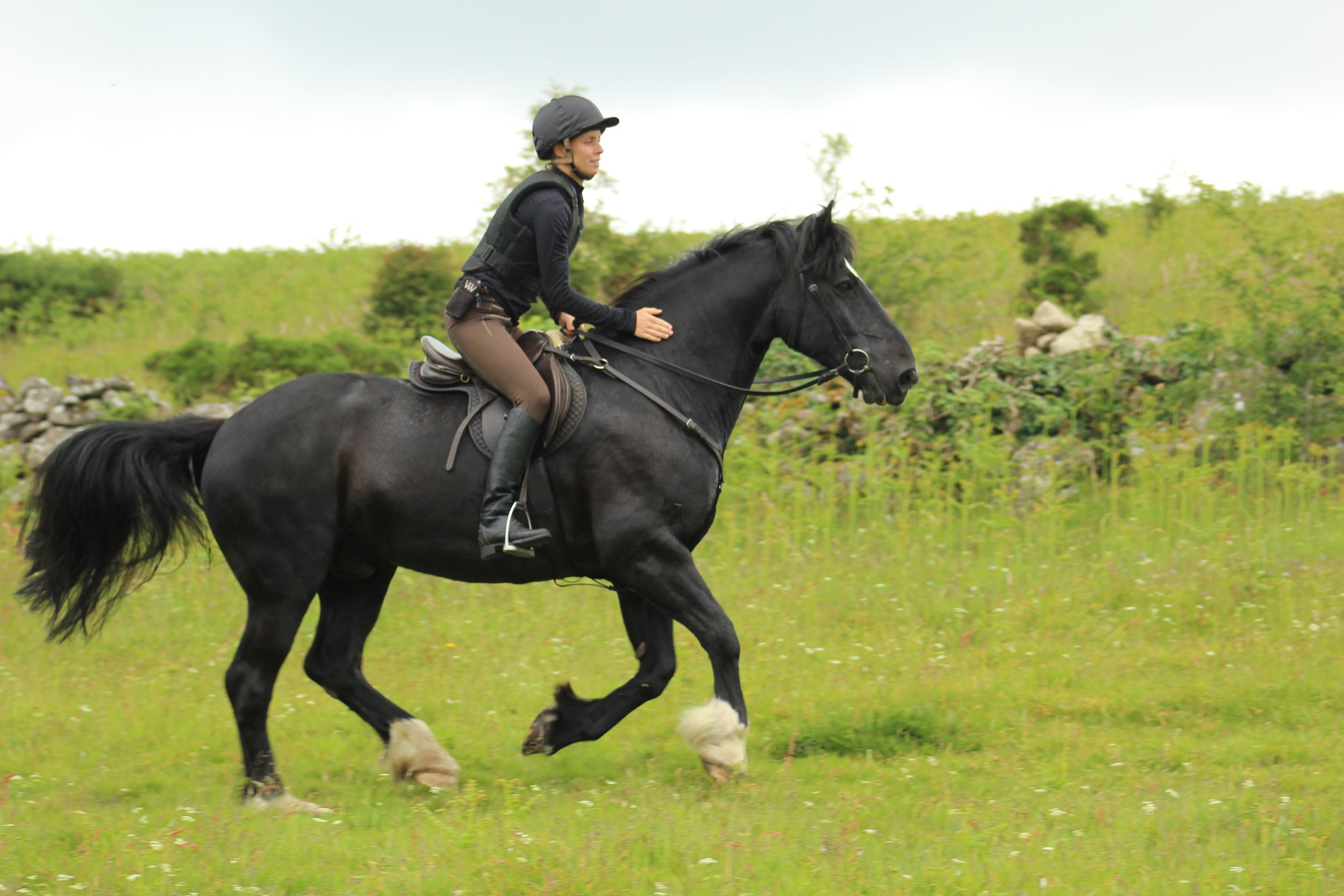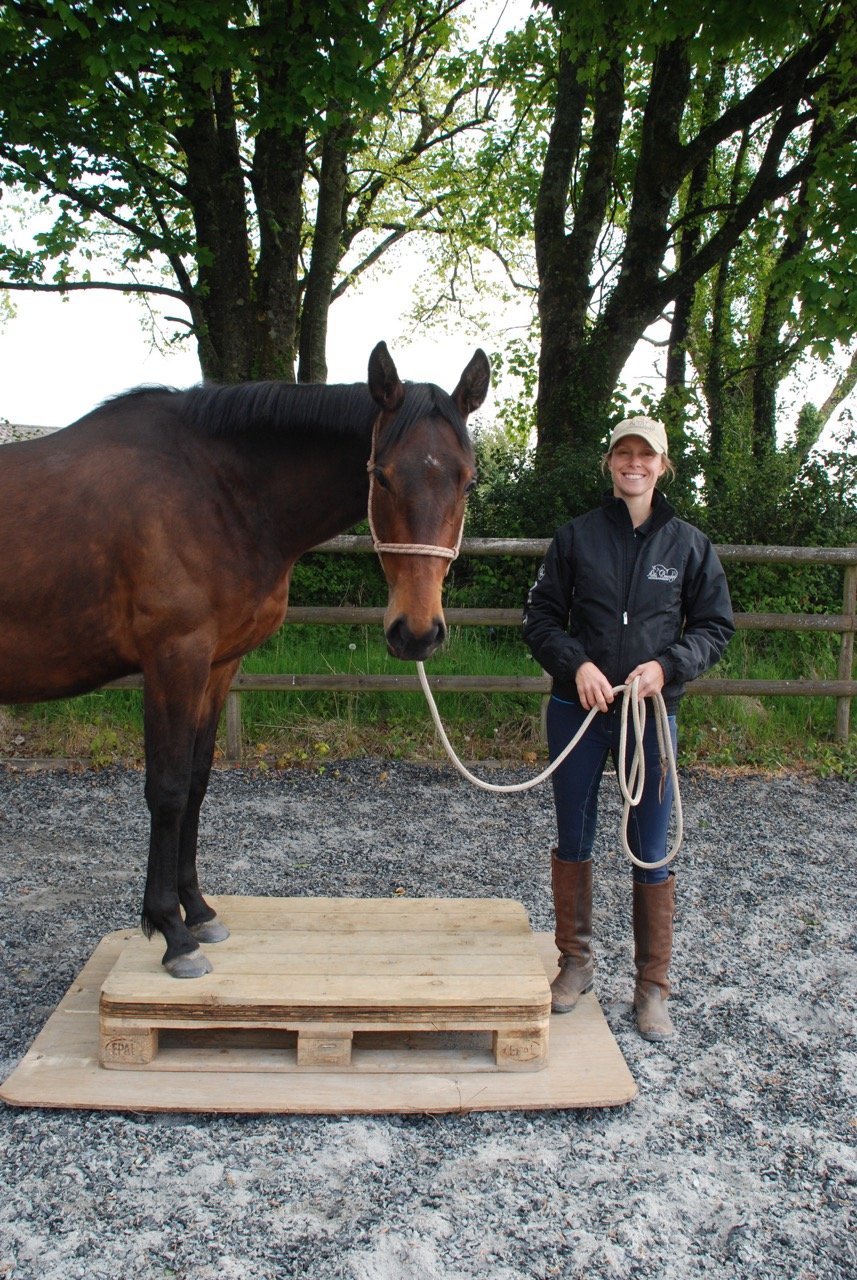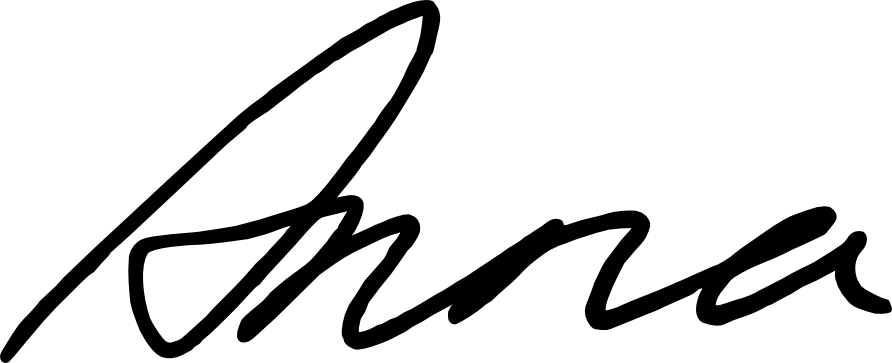Why Choose Anna?
What is Anna known for?
Training young horses or ponies and let’s not forget mules!
Anna has much joy in helping owners with their youngsters. Equines are born with a huge amount of desire to get along with humans; for Anna it’s all about preserving their willingness and nurturing their desire to be inquisitive. It is all too common for equines to be put through a training programme which can trigger troubling behaviour when the needs of the equine are not met by the programme. Anna is flexible in her approach and adapts the training to ensure that they fully understand what is required so they can feel good about their work. This is invaluable because the way that an equine feels about their work at the beginning of their ridden life is fundamental to how they will perceive future experiences with a rider. Teaching youngsters to tie up for example, it’s a skill which they need to fully understand in order to be safe and not hurt themselves, but most people tie a horse up to teach them to tie. There is a process to teaching a horse to understand being tied up before they are actually tied up. This is one of the many, many, small yet essential things Anna helps owners and young equines to understand.
Problem solving
Anna loves problem solving! Problems are an opportunity for the horse and rider to regain trust and confidence in each other. When we help a horse to change the way they feel, they naturally change the way that they behave.
Giving you a toolbox of skills
Whether you’re wanting to improve your confidence, further develop your relationship with your horse or wanting to improve your riding. A note pad and pen are essential as you’ll come away with a toolbox of ideas to practice. Anna is known for paying attention to detail with regards to a horse’s thoughts and explaining how a horse’s mind and emotions work simultaneously with biomechanics, posture and balance.
Why follow Anna’s approach?
Anna talks a lot about being able to direct a horse’s thoughts. If you can direct a horse’s thought, then you never come into conflict with a horse’s physical strength. You won’t hear Anna talking negatively of a horse or mule either, even one that is threatening to kick her. Equines are just trying to get by in the human world, they don’t have the part of the brain that we have which can be manipulative. Simply living in the moment, an equine’s behavioural patterns are born out of survival not malice. It is this deep compassion for the equine’s perspective coupled with showing you how simple changes in your approach can dramatically change an equine’s behaviour, that makes Anna unique.
Anna trained in America so is this Western Riding, Parelli or Natural Horsemanship?
It is none of the above. Anna’s approach applies to all riding disciplines, is focussed on working with the horse’s mind and emotions and seeing things from their perspective. You won’t be handed a program to follow, it’s about seeing every equine as an individual, identifying where they need more support and showing you how you can provide that support by adapting your approach, so that they can find clarity and relaxation in what is being asked of them.
What type of horses and people does Anna Train?
Anna has worked with dressage riders, eventers, happy hackers, endurance riders, western pleasure horses, youngsters at stud yards, wild Dartmoor ponies, and mules. No matter what your chosen discipline or the level of understanding you or your equine have, Anna will give you a grounding for a better relationship.
Why is Anna excited to share her approach
"It's not what we do but the way that we do it that has such a huge impact on the horse. My main goal as a trainer is to unite horse and human by sharing what I have studied and practised with regards to approaching a situation in such a way that it ensures a successful outcome for both horse and human. I’m so fortunate over the years to have learned so much from Harry Whitney in America, skills which aren’t often used at yards in the UK. For the sake of equines and their humans I’d love this information to reach a wider audience"
Why have a lesson or participate in a clinic if my horse is already easy to handle and ride?
There is always something new to learn! People who have ridden for years say they have gained a greater insight into the way that a horse could move and why a horse behaves the way it does. Just because your horse isn’t difficult to handle or to ride doesn’t mean that things can’t feel even better between you. In the UK most of us have learnt through the BHS, born out of the military system. Leading a horse from the left side only is just a small example of rules which are based around the human’s needs rather than the horse’s perspective. Anna’s focus is from the horse’s point of view and how the human can make changes to help the horse in the human world, which in this case means leading a horse from the right side, from in front, from behind, from their tail, from wherever a horse needs clarity, so that they can be confident and adaptable in their work with us.
What is Anna’s philosophy?
Anna says “My aim is for the horse to respond willingly when I ask. I ask by thinking of what I want to happen and by using my subtle body language; it can be almost imperceptible. This is a unity which is beyond just the want for obedience and submission. Only aiming for obedience can dull the horse's spirit. The responsiveness towards which I’m always working with people, is a unity of two minds, two emotions, two bodies - ours and that of the horse, both working together for the benefit of the whole, a relationship that is trusted and feels safe. True unity is free of anxiety, free of dictatorship and so also free of tension in the body for both us and the horse. With this degree of unity, we and the horse hold our own bodies in a weight bearing posture, because we are ready to respond softly at any moment in time. Only then can the horse be as healthy as possible and mentally free from stress.





